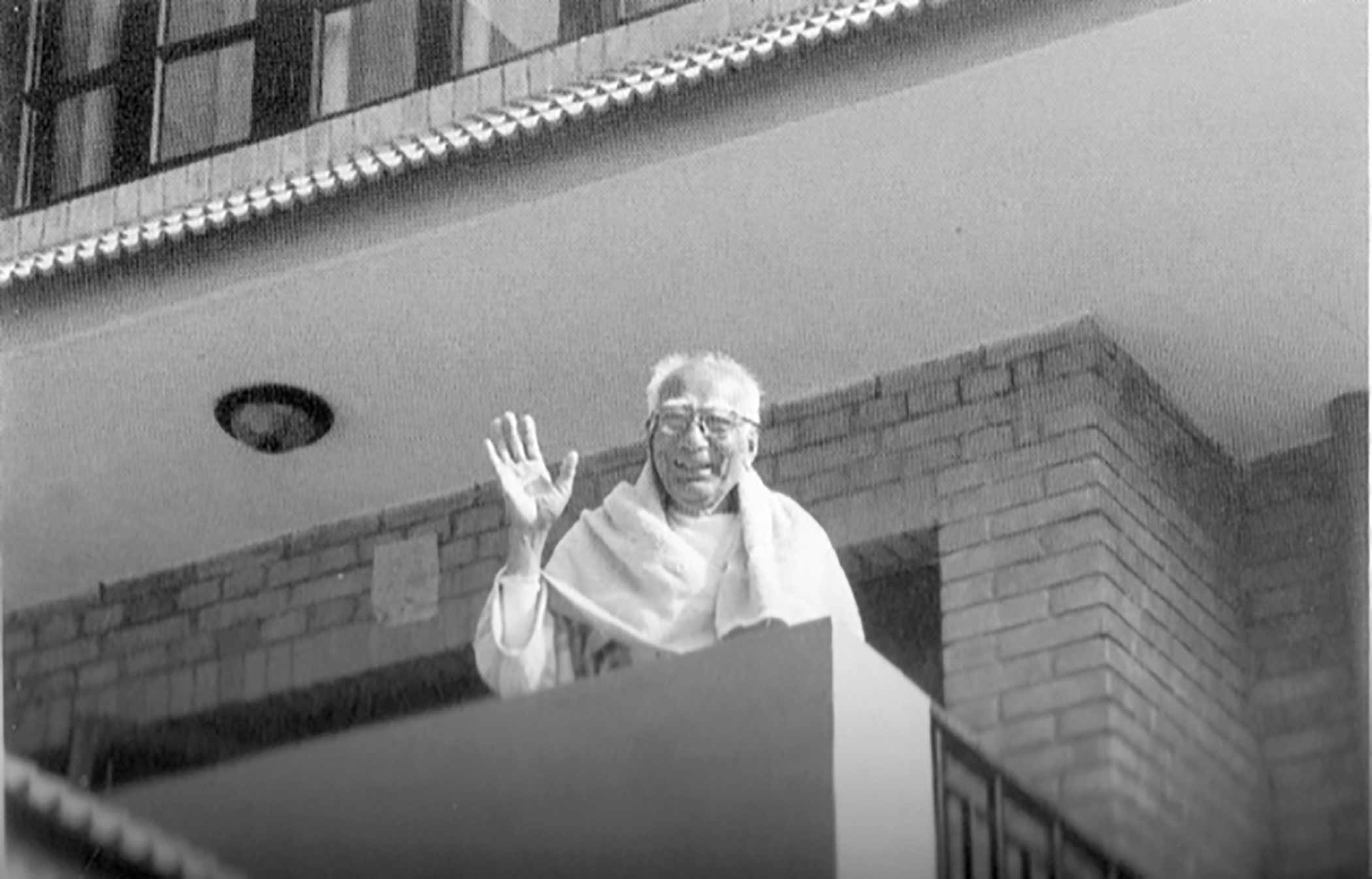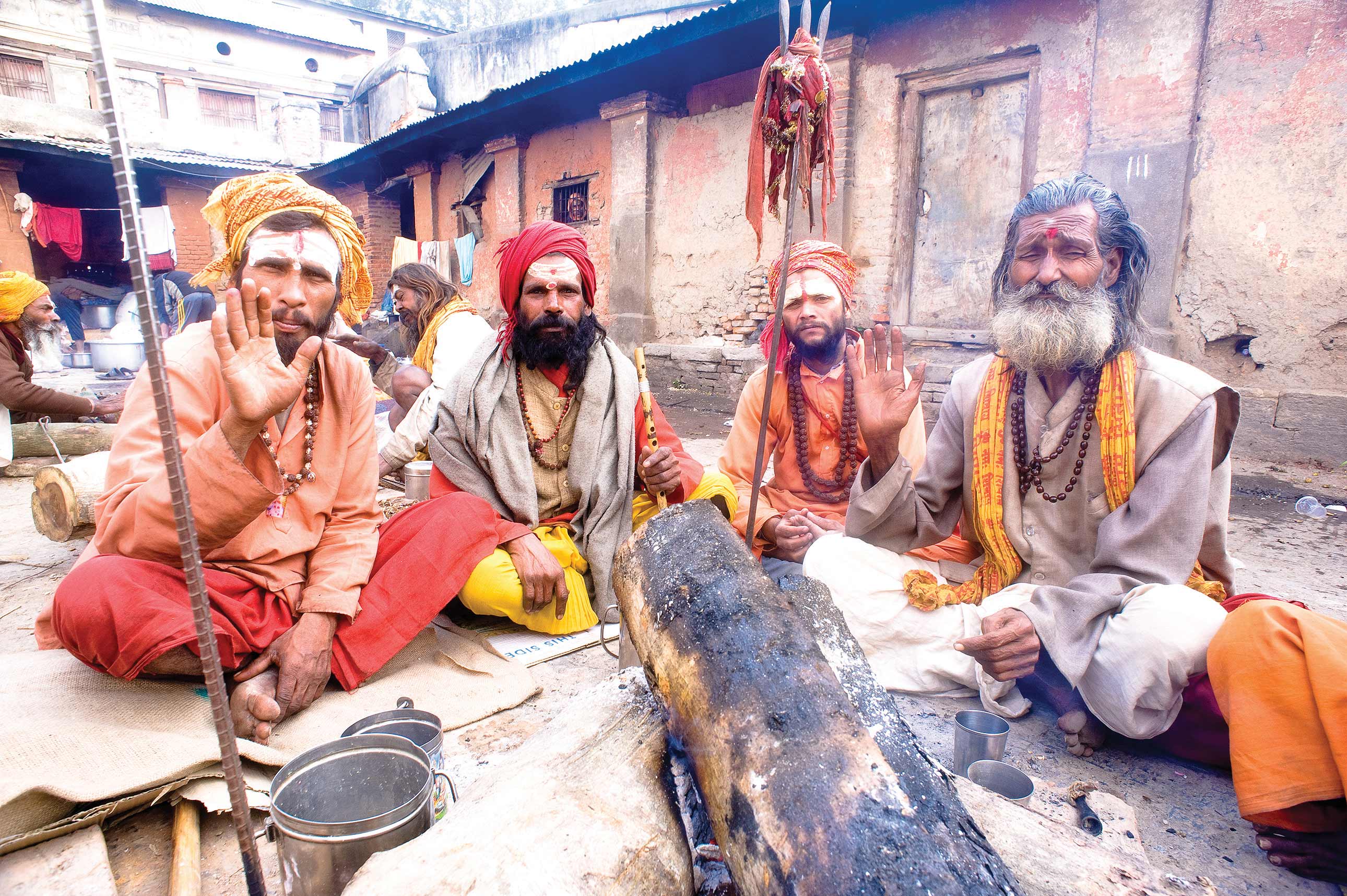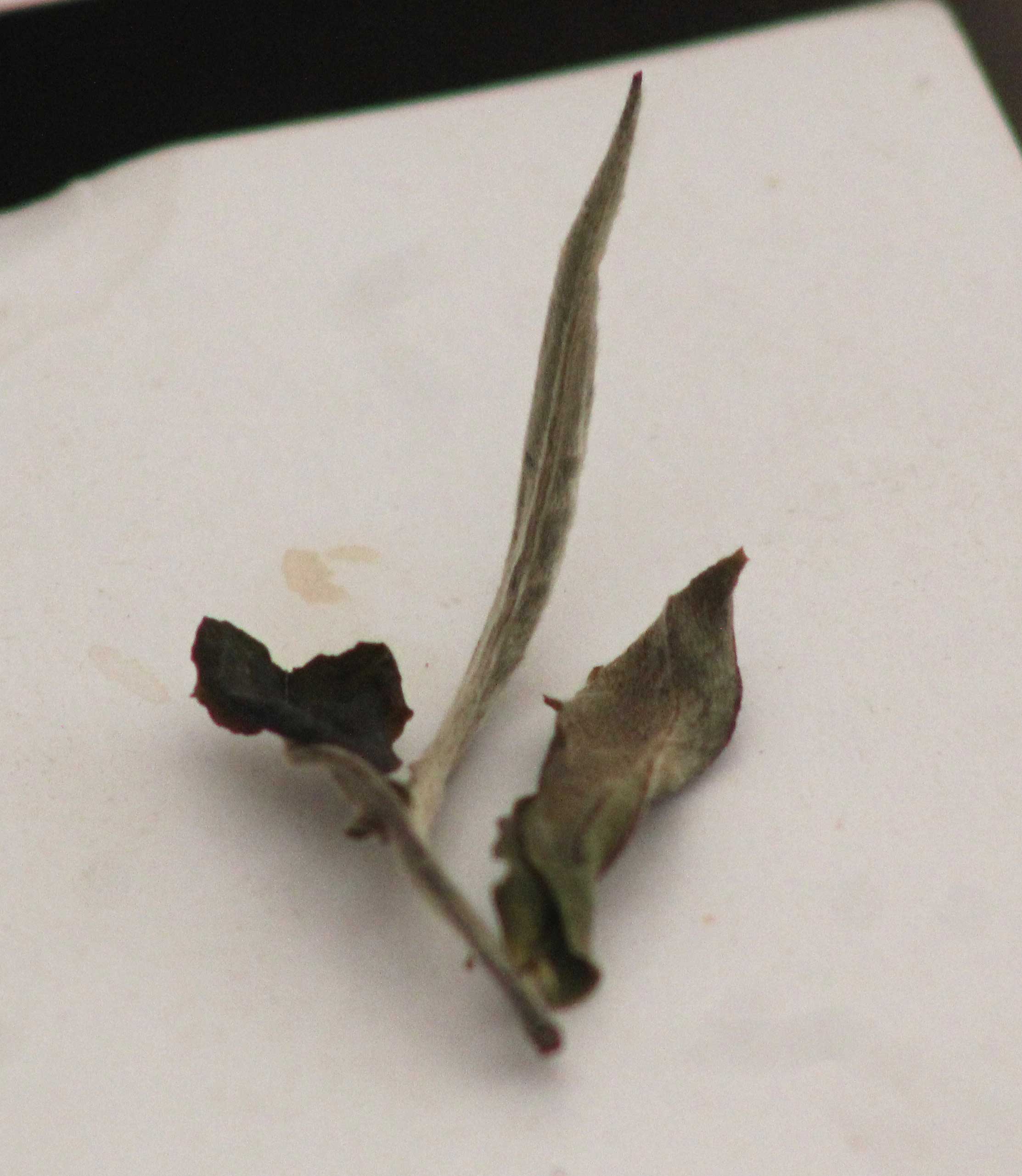The idea of joining the Great Himalaya Trail - Celebrity Smart Celebrity Trek (GHT – CSCT) team for four odd days on the western leg of the trying east to west Great Himalaya Trail came as a welcome surprise to me. I had been working at my desk copyediting too many stories for too many days and the thought of some outdoor activity sounded like music to my ears. I said yes without a second thought, thinking, it was just that, a few days out to meet and greet Mother Nature. It turned out to be much more.
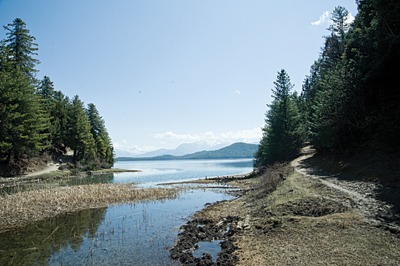 The Great Himalaya Trail
The Great Himalaya Trail
SNV’s Great Himalaya Trail Development Program (GHTDP) calls the trail “…a network of existing treks and trails which together form one of the longest and highest walking trails in the world.”
The ten sections of Nepal’s GHT, 1600 km in length, is not a sum total of all the trekking trails that the country has to offer but rather a connecting trail that shares routes with most major trekking trails and merely touches others. The website for GHTDP mentions that the idea for the GHT came in 2006, when the Dutch development agency SNV and the International Centre for Integrated Mountain Development (ICIMOD) in Kathmandu floated the idea of developing a connecting trail from east to west Nepal. Connecting the trails from Kanchenjunga in the east to Api-Saipal in the far west, the idea was to open up remote trails to trekking enthusiasts and also to promote tourism as an important part of the villagers’ income source.
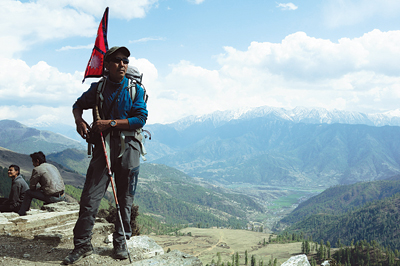 In 2009, the idea took shape as Robin Boustead walked the entire 1700 km trail in sections (also documenting it with GPS coordinates) starting in September 2008, officiating the GHT. Until 2010, only Robin had done all sections of the GHT. Then in February of 2011, Sunil Tamang, 20 set a new record as the youngest to have trekked from Kanchenjunga to Rara Lake. Back in 2009 however, the GHT was still a radical idea that few had heard of and lesser had actually tried.
In 2009, the idea took shape as Robin Boustead walked the entire 1700 km trail in sections (also documenting it with GPS coordinates) starting in September 2008, officiating the GHT. Until 2010, only Robin had done all sections of the GHT. Then in February of 2011, Sunil Tamang, 20 set a new record as the youngest to have trekked from Kanchenjunga to Rara Lake. Back in 2009 however, the GHT was still a radical idea that few had heard of and lesser had actually tried.
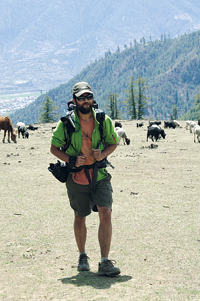 Thousands of kilometers away in Europe, also in 2009, Prashant Singh, Director at Himalayan Climate Initiatives, Dawa Steven Sherpa, Managing Director at Asian Trekking, and social entrepreneur Anil Chitrakar were also talking about the GHT as they visited 10 countries in Europe, spreading the message of arresting the effects of climate change in Nepal. This was also when they realized that their message was incomplete in that they did not have detailed information about what exactly was happening in Nepal due to climate change. Because of a Time magazine cover entitled “Tragedy of the Himalayas”, Nepal was in the forefront in the global media. There was a lot of sympathy for Nepal but more importantly global concern because it was already understood in many circles that the tragedy in the Himalayas was not something that would only affect Nepal and the Nepalese. It is also a moral issue for the western world as Nepal is suffering from problems that the world contributes to every day.
Thousands of kilometers away in Europe, also in 2009, Prashant Singh, Director at Himalayan Climate Initiatives, Dawa Steven Sherpa, Managing Director at Asian Trekking, and social entrepreneur Anil Chitrakar were also talking about the GHT as they visited 10 countries in Europe, spreading the message of arresting the effects of climate change in Nepal. This was also when they realized that their message was incomplete in that they did not have detailed information about what exactly was happening in Nepal due to climate change. Because of a Time magazine cover entitled “Tragedy of the Himalayas”, Nepal was in the forefront in the global media. There was a lot of sympathy for Nepal but more importantly global concern because it was already understood in many circles that the tragedy in the Himalayas was not something that would only affect Nepal and the Nepalese. It is also a moral issue for the western world as Nepal is suffering from problems that the world contributes to every day.
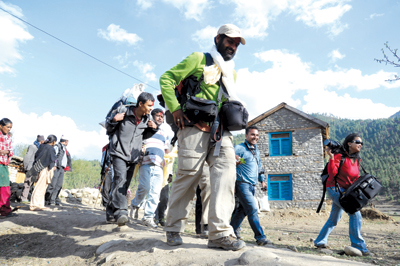 Dawa who had successfully scaled Everest in 2007, had set up the Eco Everest Expedition with a primary objective to bring down and dispose garbage from expeditions that were polluting the region to a large extent. Prashant had met Dawa when the former was associated with WWF/Nepal. With a common interest in the environment and climate change, the two wanted to do something else besides the work they were doing through development agencies.
Dawa who had successfully scaled Everest in 2007, had set up the Eco Everest Expedition with a primary objective to bring down and dispose garbage from expeditions that were polluting the region to a large extent. Prashant had met Dawa when the former was associated with WWF/Nepal. With a common interest in the environment and climate change, the two wanted to do something else besides the work they were doing through development agencies.
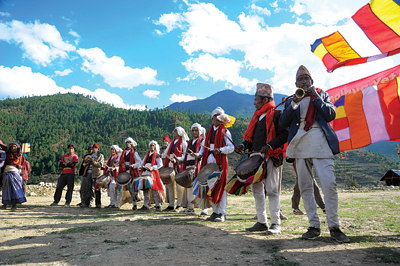 When the western world started asking about what they could do for Nepal, the need to find real, practical answers arose. The somewhat radical idea of walking across the country they realized would give them the answers they and the world needed for the real work to start. Apa Sherpa had been associated with ICIMOD before as a Goodwill Ambassador and had taken their message of fighting climate change to the summit. Known by many as the ‘super Sherpa’, Apa dai, who had climbed Everest an astonishing 21 times, added an element of celebrity to the team. Apa and Dawa would be the co-leaders of this massive expedition.
When the western world started asking about what they could do for Nepal, the need to find real, practical answers arose. The somewhat radical idea of walking across the country they realized would give them the answers they and the world needed for the real work to start. Apa Sherpa had been associated with ICIMOD before as a Goodwill Ambassador and had taken their message of fighting climate change to the summit. Known by many as the ‘super Sherpa’, Apa dai, who had climbed Everest an astonishing 21 times, added an element of celebrity to the team. Apa and Dawa would be the co-leaders of this massive expedition.
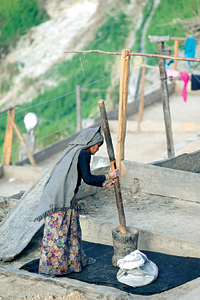 Saurav Dhakal, a journalist at Kantipur, Nepal’s leading media house joined the team as British Council’s International Climate Champion. SNV added photographer Samir Jung Thapa as the fourth member of the core team. The only two women on the expedition were Elizabeth Fox, a travel writer for Asian Trekking who has worked at ICIMOD as a Program and Information Assistant and Linda Bezemer, Tourism Product Development Advisor at SNV Nepal who was blogging every day on the trail. Paribesh Pradhan, who joined the team a bit later on the trail, is working independently to produce a climate-ologue in the form of an e-book. Paribesh, whose trip has been funded by Swiss Agency for Development and Cooperation, was also researching on education. The supporting crew for the trek comprised of experienced porters and cooks, two of whom had been on the trek from the very start. In total, the entire team including the porters and cooks had, between themselves climbed Everest a staggering 42 times.
Saurav Dhakal, a journalist at Kantipur, Nepal’s leading media house joined the team as British Council’s International Climate Champion. SNV added photographer Samir Jung Thapa as the fourth member of the core team. The only two women on the expedition were Elizabeth Fox, a travel writer for Asian Trekking who has worked at ICIMOD as a Program and Information Assistant and Linda Bezemer, Tourism Product Development Advisor at SNV Nepal who was blogging every day on the trail. Paribesh Pradhan, who joined the team a bit later on the trail, is working independently to produce a climate-ologue in the form of an e-book. Paribesh, whose trip has been funded by Swiss Agency for Development and Cooperation, was also researching on education. The supporting crew for the trek comprised of experienced porters and cooks, two of whom had been on the trek from the very start. In total, the entire team including the porters and cooks had, between themselves climbed Everest a staggering 42 times.
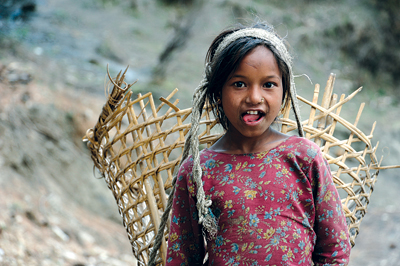 The logistics of the trip were supported by organizations such as DfID, SNV and Nepal Mountaineering Association with apparel such as shoes and clothing supported by The North Face who have worked with Dawa before.
The logistics of the trip were supported by organizations such as DfID, SNV and Nepal Mountaineering Association with apparel such as shoes and clothing supported by The North Face who have worked with Dawa before.
“In the morning a man walks with his whole body; in the evening, only with his legs.” - Ralph Waldo Emerson
My sentiments exactly, during and after completing an uphill between Cheere Chaur and Naurighat that I deemed highly unfit for city legs. It was my first day on the trail and going against practicality, I had had a heavy lunch. Sitting on the terrace of a mud house overlooking an expansive pasture that rolled down into the valley that was Jumla town, I was in a good place. The first few hours of the first day had been easy and I thought this was representative of the rest of the trail. It was not. Before lunch, the scenery had been lovely, our pace great and the conversation flowed wholeheartedly as it can only flow between new acquaintances. I struck up a conversation with Dawa as we climbed a slow, winding uphill to Cheere Chaur.
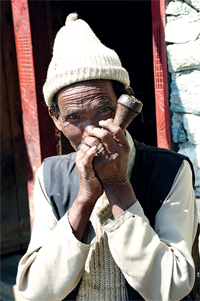 Six feet tall with a Hemingway moustache and beard combo going on Day 87 of the trek, Dawa looked nowhere like a Sherpa, mostly because he is part Belgian. A Business Administration graduate, he was on his college football team in Scotland and traveled around the country competing with other colleges. He was now traveling over his own country, trying to find the answers to some very important questions.
Six feet tall with a Hemingway moustache and beard combo going on Day 87 of the trek, Dawa looked nowhere like a Sherpa, mostly because he is part Belgian. A Business Administration graduate, he was on his college football team in Scotland and traveled around the country competing with other colleges. He was now traveling over his own country, trying to find the answers to some very important questions.
Dawa’s idea to document the stories of climate change that the team comes across and to spread awareness about adapting to climate change and promoting tourism as the most viable path to get started on towards this goal. A team of trekkers merely passing by villages actually identifying climate change effects and spreading awareness on adaptability sounded too optimistic. Questioned bluntly, Dawa agreed, answering, “From the experiences some members of our team and I have had, we can differentiate between climate change and natural disaster to a certain extent. However, yes, we cannot be a 100% sure, which is why we have a research team following us on the trail. Based on our data, they will visit these specific homes in specific villages and follow up on our work.” An example of this is a glacier they came across at Kambache in Kaski District at 2500m. It was later verified by glaciologists to be a snow field and not a glacier. Rising temperatures caused the snow to melt and disappear, making it quite obviously an abnormality caused by climate change.
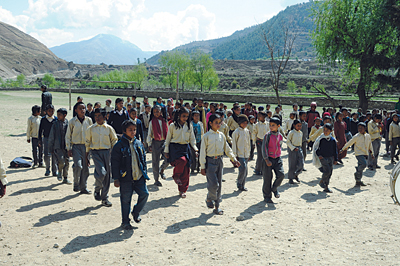 Hanaa Singer, the new Country Representative for UNCIEF/NEPAL was walking alongside us this entire team, listening to our conversation. An athlete in her other life, Hanaa had been skeptical about not having trained for this trek but she seemed to have been bluffing as she kept pace with even Apa. I asked her about UNICEF’s association with the trek. Her expression was if to say, ‘I thought you’d never ask!’
Hanaa Singer, the new Country Representative for UNCIEF/NEPAL was walking alongside us this entire team, listening to our conversation. An athlete in her other life, Hanaa had been skeptical about not having trained for this trek but she seemed to have been bluffing as she kept pace with even Apa. I asked her about UNICEF’s association with the trek. Her expression was if to say, ‘I thought you’d never ask!’
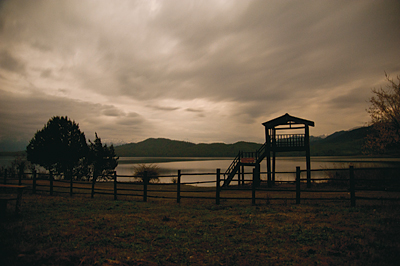 “It is children who are hit the hardest by the effects of climate change,” said Hanaa, the effects meaning in this case poverty, malnutrition, healthy mental and physical growth and even deaths in the family. In the mid and far western regions, the average malnutrition rate amongst children is a staggering 40% while their height to age ratio is very critical too. Verified by more examples on the trail than we would have liked, the core team shares these concerns. Hanaa wants awareness regarding adaptability to climate change to be integrated into the school curriculum adding that if tourism were to flourish here, she tells me, it would mean extra income for the family, which would result in a change in the child’s health, nutrition and general wellbeing.
“It is children who are hit the hardest by the effects of climate change,” said Hanaa, the effects meaning in this case poverty, malnutrition, healthy mental and physical growth and even deaths in the family. In the mid and far western regions, the average malnutrition rate amongst children is a staggering 40% while their height to age ratio is very critical too. Verified by more examples on the trail than we would have liked, the core team shares these concerns. Hanaa wants awareness regarding adaptability to climate change to be integrated into the school curriculum adding that if tourism were to flourish here, she tells me, it would mean extra income for the family, which would result in a change in the child’s health, nutrition and general wellbeing.
Earlier in the morning, I had been walking with Samir for a bit. As surefooted as a Sherpa, Samir comes from a background that has a lot to do with the outdoors - hunting. He’s chosen his own path out in nature though, having helped travel agencies find trail biking-friendly country and even training elite forces from Dubai in high altitudes. Trekking is not new to him, which is why a Sherpa porter praised his strength saying, “Samir sir ko duita mutu chha (Samir sir has two hearts).”
His ideas regarding development in any field: be it battling climate change, promoting tourism or spreading awareness about both are rather pointed. “As long as these blue number plates are in the country, there will be no progress,” he says, implying the presence of the numerous donor agencies and international non-government organizations that have spread like wildfire in the country. Hanaa understands this sentiment when I mention it to her later, saying, “Absolutely, this is true. The Nepali people have to take charge of their problems.”
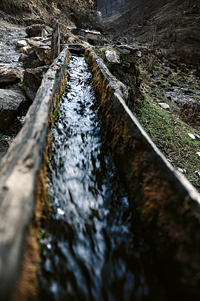 Besides the adverse effects of climate change on children, the team is also making a conscious effort to promote the GHT as a way to bring in tourists to the most remote corners of the country. The general belief is that tourism has immense potential in raising the financial status of people living in these rural areas, which in turn would put them in a better position to deal with and prepare against climate change. Prashant shares the same view with me in Kathmandu. One of the year old, not for profit organization’s objectives is also this, that tourism is the most adoptive field through which the Nepali people can improve their financial standings and thus get at a better position to adapt to climate change.
Besides the adverse effects of climate change on children, the team is also making a conscious effort to promote the GHT as a way to bring in tourists to the most remote corners of the country. The general belief is that tourism has immense potential in raising the financial status of people living in these rural areas, which in turn would put them in a better position to deal with and prepare against climate change. Prashant shares the same view with me in Kathmandu. One of the year old, not for profit organization’s objectives is also this, that tourism is the most adoptive field through which the Nepali people can improve their financial standings and thus get at a better position to adapt to climate change.
Apa recounted his own story as he probably had at many other venues on the evening of the day the GHT team arrived in Jumla. At the felicitation program organized that night, Apa in his characteristic modesty, talked about how his summer home in Langmoche village, was swept away when Dikcho Taal, a glacial lake burst. This misfortune translated into early hardships in his life. Although funded by a Danish trekker to study at the Hillary school, Apa quit after a few years simply because he had to earn to feed his family. Starting as a porter, he climbed ranks to become kitchen staff and then scaled Everest for the first time. Soon he had climbed Everest 16 times and had become somewhat of a celebrity. The five times he climbed Everest after that has been for various causes. This also meant he could now afford to take care better of his family, now settled in the U.S. and educate his children. Th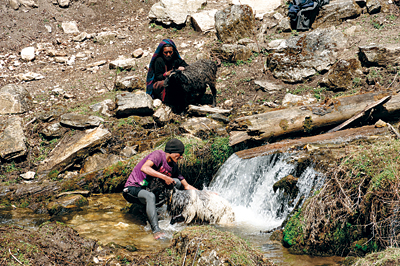 e point Apa was trying to make - he explained later to me in a hotel room in Thamel after finishing off the GHT in 99 days and before setting off to Everest Base Camp again for another Eco Everest Expedition - was that tourism enabled him to come up in life and that if he as an uneducated villager could make it, others could too.
e point Apa was trying to make - he explained later to me in a hotel room in Thamel after finishing off the GHT in 99 days and before setting off to Everest Base Camp again for another Eco Everest Expedition - was that tourism enabled him to come up in life and that if he as an uneducated villager could make it, others could too.
Sharing his experiences from the trail Apa stressed on education again when he talked about locals doing well owing to Yarsagumba in neighboring districts. “I feel sad however that children are missing school to go pick yarsa,” he said. One of his life’s regrets is that he did not have the opportunity to study. “Education is everything,” he added, his tone serious. “When I have to speak in public, when I have to answer questions thrown at me that have big words, my lack of education haunts me.” He has put his money where his mouth is too by providing support for infrastructure and supplies for a school in his home village of Thhame. The Apa Sherpa Foundation also has education as its main agenda and from this expedition also, he aims to provide more support for the school.
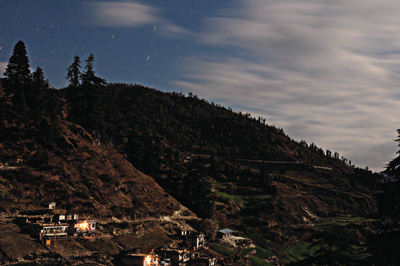 We reached Rara lake in Mugu district on our third day. Legs stiff from the last two days of strenuous trekking, Rara’s beauty and serenity rid us of our fatigue. Before we got there, Saurav and I walked together, leaving behind the village of Jhyare on the mud terraces of which we had camped. Working with video to capture stories about climate change for his blog, Saurav has helped the team prepare for the media, taking the mic at conferences to present the team and their experiences in the best possible way. His hope is that the stories on his blog at www.storycycle.com will reach out to a wide audience, one that will be able to relate better to his real people stories, with climate change as almost just a pretext.
We reached Rara lake in Mugu district on our third day. Legs stiff from the last two days of strenuous trekking, Rara’s beauty and serenity rid us of our fatigue. Before we got there, Saurav and I walked together, leaving behind the village of Jhyare on the mud terraces of which we had camped. Working with video to capture stories about climate change for his blog, Saurav has helped the team prepare for the media, taking the mic at conferences to present the team and their experiences in the best possible way. His hope is that the stories on his blog at www.storycycle.com will reach out to a wide audience, one that will be able to relate better to his real people stories, with climate change as almost just a pretext.
Of all these different personalities on the trek and their own stories, Paribesh’s journey perhaps, in its naked emotionality, seemed most personal. After his grandfather, Krishna Chandra Singh Pradhan, an imminent author and educator passed away in 2010, Paribesh had it in mind to do something that would be a fitting tribute to someone who had such a looming presence in his life. Although his trip didn’t start with this intention, the sort of in-depth view he would get about the education system became his tribute to his grandfather’s life and an integral part of his campaign Trek to Educate which will sponsor the education of needy children. “Education is the most important base for any kind of change. Without education, it is useless to talk of sustainable change,” he exclaims, one evening in Patan, before setting off to Taplejung.
A man’s trip
At Daava pass on the second day of the trail to Mugu, Dawa is feeding his newly acquired white, Tibetan Mastiff Carbo. Saurav’s sipping on some black tea with black pepper while Apa returns from a casual stroll around a local’s house where lunch is being prepared. The other members of the trip are at various stages on the trail.
Dawa: “What are you researching on sir?”
Apa: “Toilet research sir, turns out its locked.”
This exchange pretty much sums up, at least for what little portion I saw of the trek, the sense of camaraderie amongst the guys on the team. Dawa and Apa have known each other from before and Samir has been good friends with Dawa since childhood. Saurav was a new acquaintance for them, as was Paribesh, but one could hardly tell from the way each would always be pulling each others’ legs. Even Apa, who Paribesh called a ‘gentleman’, because of his habit of asking after everyone on the expedition, was not spared of their good-natured pokes.
Exhibit A: After going without a shower for a number of days, Apa takes 40 minutes in the shower before setting off from Jumla. This delay means he joins the trekkers later on the trail. It is enough for the other guys to make fun of why he took so long. One guess is that Apa was checking out how sculpted his already lean body has become. All this time, Apa just joins in, a hero for the country and the world, just another guy hanging out with likeminded friends here.
Exhibit B: When Paribesh seriously notes that Apa is a man and the rest of the team just boys, Dawa intervenes with, “Speak for yourself, you might be a boy. I’m a man.” Samir however takes the prize for keeping spirits high within the team. When kidding around, he somehow gets away with crude jokes aimed at everyone from Apa to even the ladies.
The trip is also very much a boy’s trip (no pun intended) not only owed to the guy humor and street language that can be expected between men who have been together for more than three months but also due to the rugged character of every day out in the quickly changing terrain of the trail. At his Asian Trekking office in Thamel, which was responsible for the logistics, gear and expertise for the trek, Dawa recollected some of the trying days on the trail. “Tashi Lapcha Pass at 5800m was challenging as the weather was really rough with a strong wind that had blown away many a roof and broke down hundreds of trees. We were 100m away from the pass but the Sherpas deemed it impassable so we camped on a small ledge. The wind was so strong that Samir and I, who are both six feet, had to stretch ourselves like a bow to keep the wind from surging under our tent and blowing us away.” Even in the face of such harsh experiences though, the team managed to find a lighter side. The morning after the storm, Apa, Dawa and Samir remember panicking for a bit when they didn’t see the tent where the Sherpas had camped. All that remained was a thick blanket of snow. Just when they were starting to believe that the Sherpas had been done for, the ground started to move and one by one, each porter crawled out. The poles that support the tent had broken and in their tiredness no one had bothered to put it up again, choosing instead to just sleep with the snow piled up on the tent that had fallen on top of their bodies.
Life is a journey
Before setting out to finish the initial sections of the trail that he had yet to complete, Paribesh Pradhan updated his Facebook status with a solemn one-liner: “Suddenly it feels like life is a long walk beyond 1555 km.”
Having joined the GHT-CSCT team for a mere four days between Jumla and Mugu Districts and seeing and experiencing what was but a fleeting glimpse of life on the trail for them, I can only imagine the kind of life changing experience the Great Himalaya Trail can be for anyone. Forget the jaw-dropping sceneries the team saw and camped along for much of the trip and the GHT is still an amazing trail, winding up, down and across a ‘tiny’ country and letting trekkers experience the real Nepal.
The Himalaya Climate Initiatives’(HCI) website clearly defines the objective of this massive undertaking as “an outreach and publicity event to raise awareness for the effects of climate change on the Himalayan ecosystem and people, to promote pro-poor sustainable tourism as a potential climate adaptation tool and position the Great Himalaya Trail as Nepal’s new sustainable tourism product, contributing both to poverty alleviation and economic and climate resilience of local communities.”
Prashant adds to this some figures: “60-70% of Nepal’s area is made of up of National Parks. Considering the developing nature of the country, this is quite an achievement. On top of this, all of the 2300 glacial lakes and the world’s highest mountains fall within an imaginary line.” This line that cuts through from east to west of the country goes through most of the villages, mountain areas, forests and ecosystems that are experiencing the effects of global changing. He likes to call this line, which is essentially the GHT, the frontline of climate change in South Asia. It’s a bold statement, a possibly true one too but one that is only meaningful if HCI and any and every climate change crusader works towards giving it any purpose beyond being just that, a bold statement.
For me personally, climate change seems to take a backseat when I reflect on my time on the trail. I suspect that for each member of the trip, from the experienced to the novices, the leaders to the porters, the trip was, in varying degrees, about finding answers that satisfied their own personal questions besides the ones they were trying to answer for all those that climate change in the Himalayas would affect. Because this much is true for any trek and for any trekker who comes on board with an open heart and an inquisitive mind, that trekking is a metaphor for life, and even thought you learn much about many things, like life, at the end of the day, you learn the most about yourself.
If anyone who joins a 99 day expedition for 3 days and comes back thinking he knows what he saw and heard and is thus in a position to draw conclusions based on this, the right name for that person is a fool. There is no judging what these people have accomplished, there certainly is no way to have them recall all that they saw or have them show us all that they recall. This is but the start to a long and perilous journey that they have chosen to embark on and the 99 days on the trail are, as Anil Chitrakar mentioned at the end of a felicitation program speech in Kathmandu, “the end of the beginning.” The world and certainly the country will take notice of what and where this journey takes these people, their initiative for climate change and its effects on the world, on the long walk called life, beyond the 1555 km.


